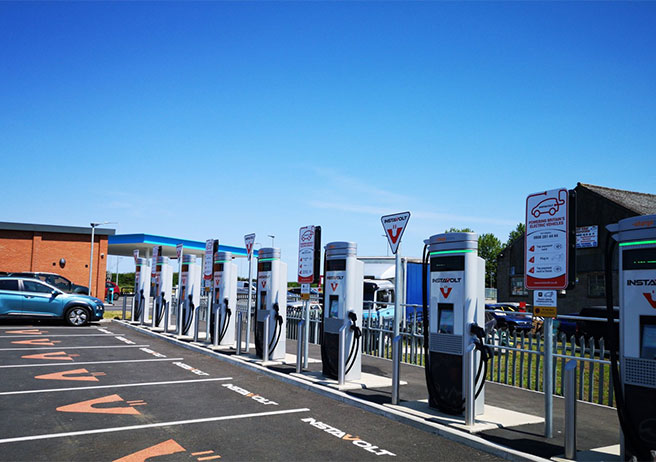
- Categories:
- News
- /
- Announcement
Cenex report informs chargepoint postcode lottery analysis
There is a postcode lottery for electric car charging points in the UK according to a study by The European Federation for Transport & Environment (informed by research from Cenex on tackling the barriers to charging infrastructure), with ample infrastructure in some areas and a charging desert in others, particularly in the east and south-west of England.
London has the most extensive network, with areas such as Kensington and Chelsea, Westminster and Wandsworth already having sufficient numbers of chargers to meet the charging needs from the electric cars projected to be on the road in 2025. But the east and south-west of England have only 18% of the chargers estimated to be needed by 2025, T&E’s study shows. The worst performing local authority areas – Castle Point, Forest of Dean, Stockport, Swindon, Brentwood and Fenland – have less than 5% of the charging needed in 2025.
Greg Archer, UK director of Transport & Environment, said: “The current network is adequate in most places, but we must level up access to public charging throughout the UK and end the postcode lottery. Local authorities should be required to provide a right to charge for residents and visitors. It’s up to the government to give the funding and support needed to make this happen.”
Chris Cox, Head of Energy Systems and Infrastructure at Cenex, said: “The equitable roll out of EV charging infrastructure continues to be a significant issue in the UK and across the globe. This is natural to some degree as new technologies will always grow in geographic clusters; however, this makes the role of the Government even more critical as it looks to fill the gaps where EV infrastructure investment doesn’t make as much commercial sense.
“Currently, the business case for high powered charging such as Rapid or Ultra-rapid chargepoints is pretty strong. Therefore, we are encouraging the UK Government to focus investment on lower power destination charging – whether on-street, or at car parks and workplaces – to ensure that anyone can feel confident about owing an EV, regardless of where they live or whether they have a driveway.”
Regional progress to charging needs in 2025
Continuing to install new chargers at the current rate of around 800 per month will provide the UK with a sufficient network by 2025, the study finds. But after 2025 the rate of installations will need to nearly double as the number of electric cars grows quickly and more drivers without off-street parking begin to use them. Workplaces and carparks should be equipped with a steadily increasing number of chargepoints so cars can be charged wherever they are driven, T&E said. With the range of electric cars increasing, most drivers will only need to charge once a week or less, given typical car use.
Greg Archer concluded: “The perception of charging is worse than the actual experience of most electric car users. But to persuade more drivers to shift to electric, we need sufficient infrastructure throughout the UK that is both reliable and easy to access. The government doesn’t need to pay to install chargers, but it should use regulations to ensure there are enough sites in workplaces and other car parks, and that the costs of connecting to the electricity grid are affordable.”
Cenex produced a research report for Transport and Environment that identifies 19 barriers to the growth and efficient operation of the UK’s electric vehicle charging infrastructure network and proposes 21 policy solutions to overcome those barriers.
These barriers and solutions were categorized into four key themes:
- Poorly Defined and Inadequately Resourced Role of Public Sector
- Cost of High-Power Charging Infrastructure Installations
- Difficulty Meeting User Needs in Commercially Unattractive Locations
- Market Competition Harming the Electric Vehicle Driver Experience